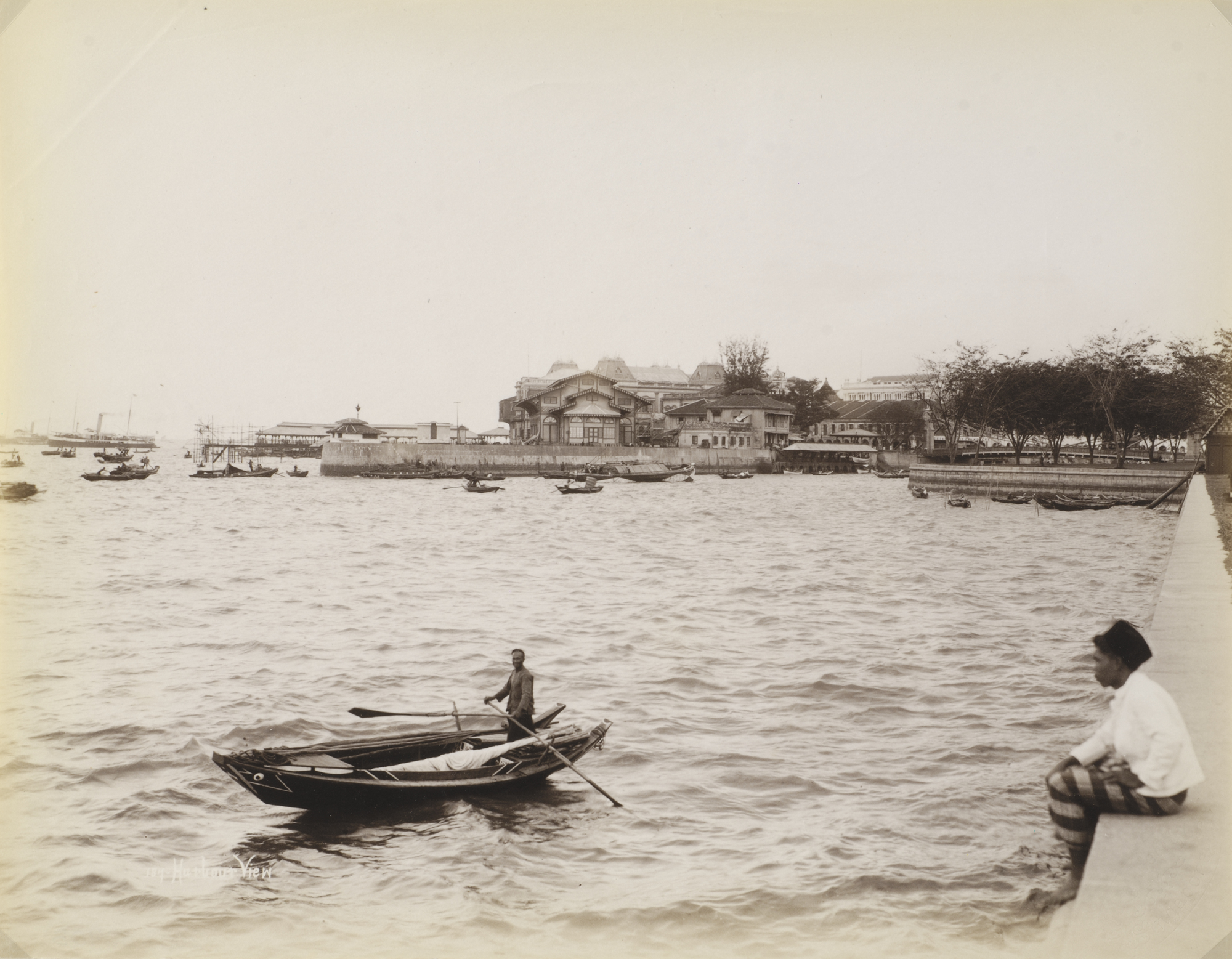Shows
Living Pictures: Photography in Southeast Asia


“Living Pictures: Photography in Southeast Asia”
National Gallery Singapore
Dec 2, 2022–Aug 20, 2023
“Living Pictures” was a landmark effort by the National Gallery Singapore in presenting a critical exposition on the history and development of photography in Southeast Asia. Working with over 300 photographic works, the curatorial team led by Charmaine Toh, including Roger Nelson, Goh Sze Ying, Roy Ng, and Kenneth Tay, framed a five-chapter narrative that “consciously avoided the existing frameworks of photographic histories . . . largely driven by stylistic developments in reactive chronology.”
Five of the ten countries in Southeast Asia that fell under colonial rule were represented in the first section, “Colonial Archives,” which explored the contexts of circulation at the time. Tourism souvenirs were primarily covered, such as GR Lambert & Co’s extensive prints of people, landscapes, and industries in Singapore from the late 19th to early 20th century and DA Ahuja Studio’s early 20th-century lithograph postcards of Burma. Some were produced for educational purposes, like Kleynenberg & Co’s photogravure prints of Java from 1912–19 for schools across the Netherlands.

Thailand, the only Southeast Asian country that evaded colonization, was extensively displayed in the next section, “Portraits and Performance.” Two regal portraits courtesy of Woodbury & Page served as the initial encounter in this space: the ambrotype prints circa 1858 of Sultan Hamengkubuwono VI and his Principal Consort Ratu Kencana, each in their accentuated adornments and elaborate frames. Aside from Thai royalties, other portraits featured in this section included the family photographs of Wu Si Jing and Huang Da Li (1940s–60s), the natives of Sarawak through the lens of Hedda Morrison (ca. 1950s), and monks from the Buddhist Archive of Photography in Luang Prabang (ca. early 20th century), the only photographs from Laos in this exhibition.

In the third section, Rong Wong-Savun’s snapshots of kinetic passers-by in Rama I Bridge (ca. 1958) exuded the essence of “In Real Life”: a million things are happening around us, and a single frame can only capture a minuscule part of it. This was further examined with the contrasting spectacles of the Second Indochina War, with much-publicized images like Nick Ut’s Terror of War (1972) and Eddie Adams’s The Execution (1968) shown alongside lesser-known but equally important photographs by Vương Khánh Hồng, Võ An Khánh, and Lâm Tấn Tài. The section also gave a glimpse into how the Indonesia National Revolution (1945–49) and the May 13 incident (1969) in Kuala Lumpur were documented at the time.

Across the room, “New Subjectivity” perceptively started with a reflection on the aftermath of the war with Vandy Rattana’s photograph of a seemingly peaceful pond from his Bomb Ponds series (2009). Succeeding works in this section were experimentations and interrogations on the photographic medium, such as the introspective conceptual creations by Pramuan Burusphat and Nap Jamir II in the late 1970s and the single-second memorialized performances by Lee Wen and Melati Suryodarmo in the early 2000s.
.jpg)
The last gallery—spacious, white, high-ceilinged—externalized the limitless boundaries of photography in “Contemporary Imaginations.” Meaningful reimaginations of archival materials were staged in the last section: notably, Ly Daravuth’s The Messengers II (2000/2021), reframed photographs of children from the Tuol Sleng Genocide Museum in Phnom Penh, Cambodia; Stephanie Syjuco’s Block Out the Sun (2019), in which she hid the faces of Filipinos shipped to the 1904 St. Louis World’s Fair; Nyein Chan Su’s Portrait in Black (2012), a blood red text overlay on a photo of his actress-aunt that alluded to women under Myanmar’s military rule; and Ahmad Fuad Osman’s Recollections of Long Lost Memories (2007), which looked back at Malaysia’s independence with amusing self-inserts. Outside the room dedicated to Osman’s slide projections, Fyerool Darma’s floor-to-ceiling installation Poietics of Pantun/Pantoum (2022) tackled the ubiquity and dis/interconnectedness of images in the hypernet era.
“Living Pictures” was a useful primer on the history of photography in Southeast Asia, but looking at the extent of this survey, only three countries (Singapore, Indonesia, and Malaysia) were present across all sections, and Brunei and Timor-Leste were notably absent. Nevertheless, it was a significant step towards cultivating an interest in and contributing to photography scholarship within the region.
Lk Rigor is a writer based in Manila.







